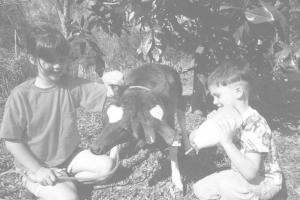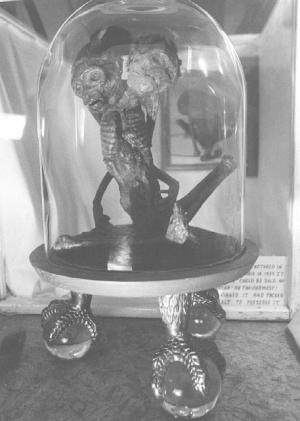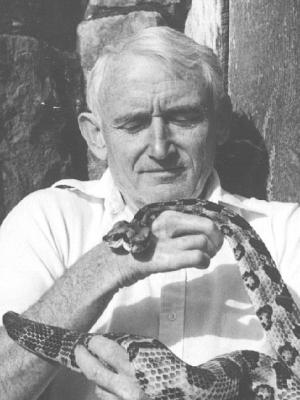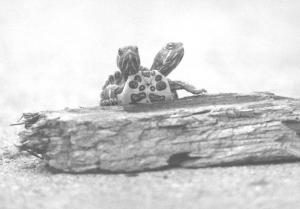2000 - Volume #24, Issue #2, Page #22
[ Sample Stories From This Issue | List of All Stories In This Issue | Print this story
| Read this issue]
Two-Headed Pet Collection One Of The Last Great Side Shows
 |
 |
 |
 |
Everyone's heard that two heads are better than one, but Lally, of West Fork, Ark., has turned that saying into a money-making enterprise. He has the world's most unusual collection of two-headed animals.
He turned the rare pets into a thriving business, but Lally is also sincerely attached to the little oddities. He lovingly hand-feeds them, calling them by name.
"I'm proud to be one of the last of a dying breed û an independent sideshow operator. My old-style traveling oddities show is the kind of thing that used to be part of every county fair, years ago," Lally explains. He quickly points out that what sets him apart from his predecessors is that his exhibit is based on the honest portrayal of real-life flukes of nature, as opposed to deception.
For the first 30 years of his career, Lally followed the county and state fair circuit with a snake show called the Oklahoma Rattlesnake Roundup. Occasionally, he would include an additional exhibit with such things as a 450-lb. live albino alligator. In 1995, he purchased a month-old two-headed rattlesnake. The tremendous interest that resulted led Lally to develop an extensive two-headed animal exhibit, featuring a freakish gallery of stars with genetic abnormalities.
Lally's collection now includes the two-headed rattlesnake, six two-headed turtles, and a mounted collection of two-headed animals he purchased from other people. These stuffed animals are authentic (not man made) and include a two-headed monkey that died in Columbia in 1937, a two-headed calf, a four-eyed, four-eared, two-snouted pig, and a stuffed one-headed, eight-legged pig.
Lally's six turtles are "red-eared sliders" that he paid an average of $500 each for. He describes two of them as being like sets of "Siamese" twins, with six legs, and shells merged together in a heart-shape. The other four turtles are what he calls "standard" two-headed turtles.
According to Lally, both heads on the turtles do eat although they sometimes fight over food. Lally says he sometimes notices one turtle head sleeping while the other is awake.
Lally first acquired D.T. the snake after hearing about it on the radio. He had previously tried to buy another two-headed snake of a different species, but was outbid by the San Diego zoo, which paid $3,500 for it. Lally was able to purchase D.T. from a northern Alabama junkyard owner for $850.
"Two-headed calves are a dime-a-dozen but a two-headed rattlesnake is a rarity, comparatively speaking. I've heard of four other 2-head rattlers, but none have been kept alive in captivity. However, I've heard about or seen pictures of at least one two-headed calf in almost every town I've traveled to," Lally says.
He charges $1 per person to see his show and travels the country from March until September to make his living. He tours the southern U.S. and also hits some fairs in Iowa, Minnesota, Michigan and Texas.
"The rattler draws people to my show the best of anything I've ever had. There's something about the innate fear evoked by venemous snakes, combined with the freakishness of two-headedness that really pulls people in."
Contact: FARM SHOW Followup, Fred Lally, 15058 S Hwy. 71, West Fork, Ark. 72774 (ph 501 839-3660 from Oct. û mid-March.)

Click here to download page story appeared in.

Click here to read entire issue
To read the rest of this story, download this issue below or click here to register with your account number.




